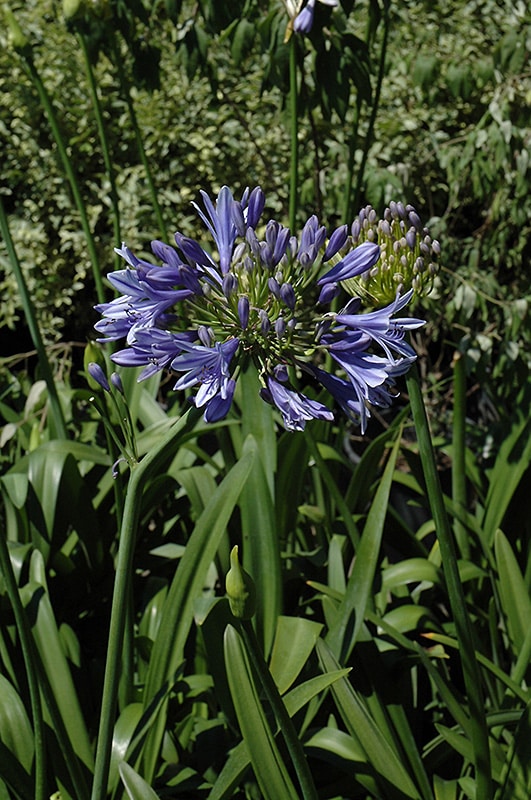Mastering the Art of Agapanthus Treatment: Necessary Steps for Healthy Growth and Vibrant Blossoms
In the realm of gardening, the growing of agapanthus stands as a gratifying undertaking for those that look for to nurture these classy flowering plants. With their striking blooms and stylish vegetation, agapanthus has caught the attention of garden enthusiasts worldwide. Nevertheless, achieving optimum growth and lively blossoms requires a nuanced method that includes various important steps. From choosing the best variety to mastering trimming strategies, the journey in the direction of cultivating thriving agapanthus plants is multifaceted and holds the crucial to opening the full possibility of these organic gems.

Selecting the Right Agapanthus Range

When choosing the best Agapanthus variety for your yard, take into consideration factors such as environment suitability, bloom color, and growth habit. In addition, consider the climate in your area to make certain the Agapanthus range you choose can flourish in your certain problems. Recognizing the development behavior of various Agapanthus varieties is critical for proper placement within your garden.
Suitable Growing Conditions
Considering the ideal ecological demands is vital for effective Agapanthus cultivation. Agapanthus prospers in well-draining dirt with a slightly acidic to neutral pH degree. When growing, choose an area that obtains full sunshine to partial color. In hotter climates, giving some mid-day shade can prevent scorching of the fallen leaves. Agapanthus plants are delicate to cold temperature levels and must be secured from frost during wintertime months.
To make sure healthy and balanced development and vivid blossoms, plant Agapanthus light bulbs at a deepness of regarding 2-4 inches and space them 8-12 inches apart. Mulching around the base of the plants aids preserve dampness and suppresses weed growth.
Watering and Fertilizing Tips
Keeping correct wetness degrees and providing important nutrients are crucial elements in the treatment program for Agapanthus plants. When it concerns watering Agapanthus, it is important to strike a balance. These plants prefer continually damp soil however are at risk to root rot if overwatered. Throughout the expanding season, water deeply as soon as a week, making sure the soil is well-draining to stop waterlogging. In hotter climates or during periods of dry spell, even more frequent watering may be required to keep the soil evenly moist. Nevertheless, reduce watering in the wintertime to protect against water logged conditions.
Feeding Agapanthus is crucial for promoting healthy growth and respected blossoms. Use a balanced plant food, such as a 10-10-10 formula, in the early springtime as brand-new growth emerges. Repeat this application every 6-8 weeks throughout the growing period. Stay clear of excessive fertilizing, as it can lead to lush vegetation at the expense of blooms. Always comply with the manufacturer's instructions for appropriate dilution and application methods. By complying with these watering and fertilizing pointers, you can ensure your Agapanthus plants prosper and create vibrant, lasting blooms.
Pruning Methods for Agapanthus
Trimming Agapanthus plants at the suitable times and with correct strategies is essential for view website maintaining their wellness and advertising ideal growth and blooming. The perfect time to prune Agapanthus is in late winter season or early springtime prior to new growth arises.
For flowered stems, wait until the blossoms have actually perished and then trim them back to the base. This not just tidies up the plant's appearance however also urges the development of new blossom buds. Deadheading invested blossoms can additionally redirect the plant's energy right into producing even more blooms instead of setting seeds. Nevertheless, if you intend to gather seeds for breeding, leave some blossoms to mature and dry on the plant.
Bear in mind to use tidy, sharp devices to make precise cuts and lower the danger of presenting illness. Agapanthus. Normal trimming will assist maintain your Agapanthus looking neat and healthy while guaranteeing a bountiful display of gorgeous flowers
Handling Typical Bugs and Illness
After making certain appropriate pruning techniques for Agapanthus, it is vital to attend to usual bugs and illness that can impact the wellness and vitality of these plants. Agapanthus plants are normally durable but can still drop victim to certain problems. One typical bug that influences Agapanthus is the Agapanthus gall midget. This small, orange fly lays its eggs in the foliage, resulting in altered development and blossom buds that stop working to open up. To fight this bug, prune and destroy any damaged plant parts and take into consideration making use of insecticidal soap.
Another usual problem is fungal fallen leave spot, which offers as dark lesions on the leaves. To stop fungal illness, ensure good air blood circulation around the plants, prevent overhanging watering, and get rid of any infected fallen leaves promptly. Furthermore, Agapanthus plants can struggle my explanation with root rot if they are grown in poorly draining soil. To avoid this, plant Agapanthus in well-draining soil and stay clear of overwatering. By being vigilant and taking timely action against illness and parasites, you can assist your Agapanthus plants grow and produce dynamic blooms.

Final Thought
In conclusion, mastering the art of agapanthus care includes selecting the best range, giving perfect planting problems, correct watering and fertilizing, suitable pruning strategies, and resolving typical bugs and illness. By following these essential actions, you can guarantee healthy development and lively flowers for your agapanthus plants. Keep in mind to regularly check and preserve your plants to promote their general health Bonuses and long life.
To guarantee healthy growth and dynamic blossoms, plant Agapanthus light bulbs at a deepness of concerning 2-4 inches and area them 8-12 inches apart. By complying with these watering and feeding pointers, you can guarantee your Agapanthus plants flourish and create vibrant, lasting flowers.
One common bug that influences Agapanthus is the Agapanthus gall midge. Additionally, Agapanthus plants can suffer from origin rot if they are grown in inadequately draining pipes soil. By adhering to these important actions, you can make certain healthy development and lively blossoms for your agapanthus plants.